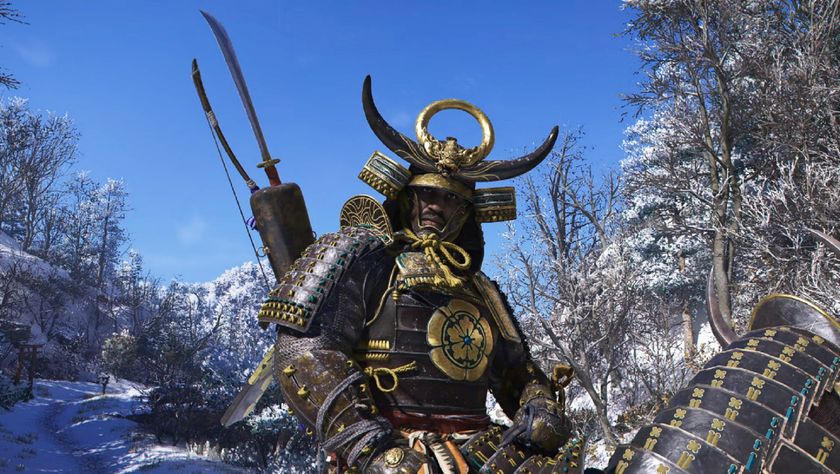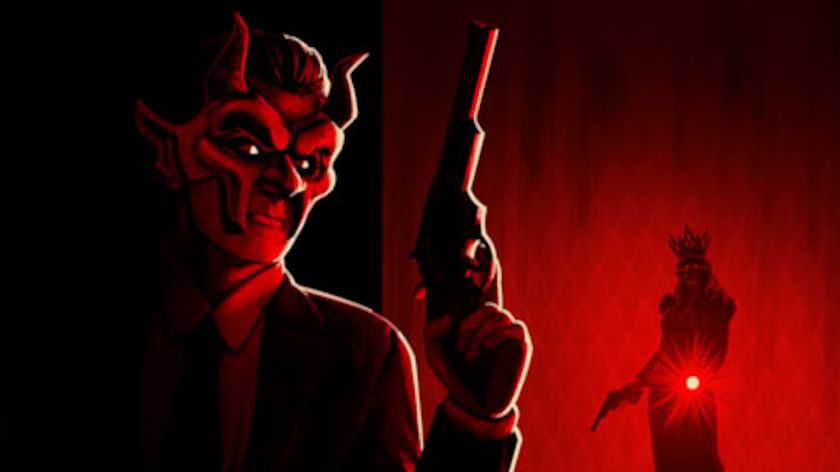Life is Strange: Before the Storm broke our hearts in good and bad ways
Before the Storm's final episode caused a lot of debate, but it also gave us a love story that transcended the series.

Want to play a game that will stamp all over your heart, leave you regretting every decision you've ever made and have you questioning why you even bothered in the first place—but in a good way? If your answer to all the above is yes, then might I suggest Life is Strange: Before the Storm. Then, when you've finished all three episodes, come back and read the rest of this article because it contains hella spoilers.
Before the Storm captures the zeitgeist just like its predecessor, Life is Strange. Both games nod to the cult iconography of the Pacific Northwest, and both play out like an indie movie fresh from Sundance. Before the Storm had the extra challenge of weaving themes of love, loss, and recovery into an established and beloved story though. Before the tornado, before the dark room, before time travel, there was Chloe Price (voiced by Rhianna DeVries) and Rachel Amber (voiced by Kylie Brown)—two teenagers drawn together by their own personal pain. That's the story Before the Storm sets out to tell.
In the original, Rachel's absence was the driving force of the narrative, and everything we knew about her was reconstructed through photographs, letters, and Chloe's memories. In Before the Storm Rachel is no longer a plot device, but a fully fleshed out and complex character, making the later events of Life is Strange even more tragic. Before the Storm goes to great lengths to establish Rachel as Chloe's savior and vice versa, injecting hope into a devastating chain of events. It's hard not to fall in love with Rachel just like Chloe does, which is why Episode 3 was met with such a mixed response.

Love at the center of the storm
At the start of Before the Storm, Chloe is isolated. Her diary and texts are filled with messages to Max, who is now in Seattle, leaving her alone to deal with the death of her father and the jarring presence of her mom's commando boyfriend. Rachel quickly fills that gap left by Max in Episode 1, then their relationship deepens and Rachel's influence seeps into every aspect of Chloe's life.
When you get the opportunity to kiss Rachel to prove your devotion, it's the validation that Life is Strange flirted with but wouldn't commit to.
In dream sequences Chloe's father tells her "sometimes people need you, even when they don't admit it," and refers to their first fight as a "lovers quarrel." Steph, the openly gay student at Blackwell Academy, also asks Chloe the exact nature of their friendship. You learn that Chloe's overuse of the word 'hella' is thanks to Rachel, and you're given the option to adorably flirt with her to pass the time. None of these moments change depending on the decisions you make as the game goes on. It's quite clear from the 73% of people who told Rachel you were more than just friends at the end of Episode 1 that the romantic path is a popular one, which I am all for.
While a romantic relationship between Chloe and Rachel was expected, one this explicit was not. Life is Strange struck a chord with LGBT gamers thanks to Chloe and Max's ambiguous friendship during the first game, and there are several moments where Max can cross that boundary. Before the Storm is different. Rather than a bonus kiss which you only get by making certain choices, Episode 2 leaves no room for uncertainty.

If Before the Storm were a rollercoaster, Episode 2 would be the moment you reach the top and enjoy the view. The most romantic and meaningful moments happen toward the end, including one of the best interpretations of Shakespeare's play The Tempest I've ever seen. When you get the opportunity to kiss Rachel to prove your devotion, it's the validation that Life is Strange flirted with but wouldn't commit to. When they express their feelings for each other, who could help but root for them to escape Oregon?
The biggest gaming news, reviews and hardware deals
Keep up to date with the most important stories and the best deals, as picked by the PC Gamer team.
Episode 2 is also where the other plot points begin to take shape—in particular the relationship between Chloe's drug dealer Frank, his partner Damon, and Rachel's heroin-addicted mom Sera.
Episode 3 shifts focus onto this storyline dramatically. Gone are the moments of tenderness between Chloe and Rachel, replaced by a balls-to-the-wall finale with a stabbing, a main character who turns homicidal, and the reveal of the real villain of the story. At the start of the episode Chloe creates a lightshow of stars on Rachel’s ceiling, but this is the last moment of genuine intimacy between the two, and given that we know Rachel dies two years later it doesn’t feel like enough.
While it was not the finale I expected, Deck Nine had a lot of loose ends to tie up and a short amount of time to do it in. Ideally Before the Storm would have been five episodes long like its predecessor—there is so much more of this story that could have been told.

We get it, Rachel is dead
The series ends with a decision to lie to Rachel about her father's dirty dealings or tell her the truth. Compared to the ultimatum at the end of Life is Strange, this decision is pretty low stakes but important given how themes of honesty play throughout the game. We're then presented with a montage of Chloe and Rachel's next two years together—Chloe dying her hair, rolling around Arcadia Bay in Chloe's truck, getting their tattoos, etc. This is where it should have ended. It's bittersweet given what we know will happen in the future, but heartwarming to see Chloe and Rachel enjoy some time together.
Having said all this, I was not expecting a happy ending.
Yet, for some reason, a post-credits scene was added showing Chloe desperately trying to contact Rachel while the sounds of a camera go off in the background, reminding us of Rachel's fate in the dark room. This kind of emotional manipulation is something that a lot of players, myself included, found unnecessary. It was a twist of the knife that seemed too obvious.
Given the way Chloe and Rachel’s relationship is presented throughout Before the Storm, there's a touch of unusual malice in the decision to include the post-credit scene. It's entirely out of place given the subtlety and thoughtfulness of the previous episodes. The ending also played into a lot of damaging tropes that queer people have been battling against within media—the Bury Your Gays trope for one, the time-worn narrative that homosexuality ultimately ends in tragedy. Queer women in TV, film, and now games seem to have a nasty habit of dying, and after a while it begins to wear you down. While I don’t think Deck Nine, Dontnod or Square Enix considered this when they created their game, I wish they had.

Having said all this, I was not expecting a happy ending. Rachel is dead when Max returns to Arcadia Bay and Deck Nine had a responsibility to the canon that Dontnod created. However, I find it hard to get behind the decision to keep Rachel dead in every outcome of the game, especially when the mechanic revolves around player choice and, well, time travel. But perhaps that is the point, sometimes people have to die and there’s nothing you can do about it—it’s just a shame it has to be yet another beloved queer character.
It’s going to take a good while before I can sit through a replay Life is Strange now that we know exactly what it was that Chloe lost when Rachel died, but maybe this time I’ll choose to save Arcadia Bay—at least that way they can finally be together.


















